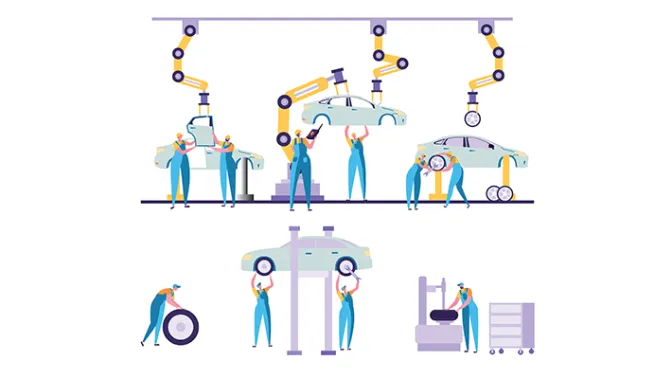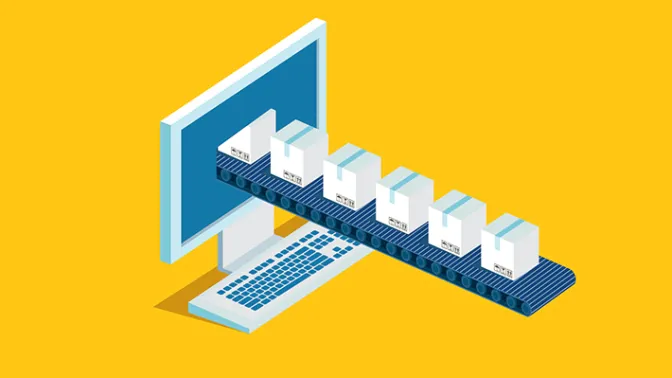
A Conversation with Paul Myler, VP of Supply Chain at KIND Snacks
June 4, 2018
To lead the transformation of supply chains into the next decade, professionals must identify the opportunities and challenges facing their supply chain processes and consider the resulting impact on the organization, its products and services, and its interactions with suppliers, customers and partners. Drexel LeBow interviews supply chain executives to learn about their roles, their current initiatives and practices, and the future direction of their organizations.
Q. What are the key priorities and functions of your role as VP of Supply Chain at KIND Snacks?
KIND Snacks is a relatively young company, having started in 2004. We are busy creating a supply chain that will scale with the next waves of growth we anticipate. This means everything from installing a great integrated business planning process to installing advanced planning software—these are our top two priorities in 2018. Additionally, we are working tirelessly to improve our demand signal so that we can continue to drive down cost in the supply chain to allow us to aggressively reinvest those funds back into growing the business. One of the things I keep in mind as my “true north” is fostering supply chain talent and best-in-class processes and results delivery, ensuring our KIND team members can compete in their roles against the best of them out in the marketplace. This means constantly challenging ourselves to get better every day and creating meaningful opportunities for our team members to learn, grow, and progress in their careers.
Q. Compared to other supply chains such as cars, phones and apparel, what is unique about your snack supply chain? What special challenges do you face?
Like many food companies, freshness of our products is very important. Phones and apparel have a shelf-life for sure, but with food, when you get it wrong, you’re either stocking out or you’re marking down at poor margins. Also, many other categories deal with assemblers or suppliers for their product, whereas we control the production of our products directly—this is all the way from the procurement of the raw ingredients to the actual manufacturing of our snacks. Finally, as capacity is fairly specialized for the technologies that go into making our products, we have to do a good job predicting the rate of growth for KIND because there can be a substantial lead time involved in adding additional capacity.
Q. It is observed that in today’s highly competitive market, consumers are seeking more variety and flavors. How does variety affect your supply chain management?
This dynamic forces us to be flexible. We have some items that sell millions of bars in a single flavor and we have some items that sell much less and they’re often running on the same assets. So, we have to balance an economic production quantity against the responsiveness we need to react to changes in demand. Additionally, we are constantly adding new things into our portfolio. Whether this is a differentiation for a customer or a new innovation, we have to continually manage some fairly complex projects to commercialize whatever the new thing is—and many times it’s something we’ve never done before! All this adds up to driving a network strategy that allows us to reap the benefits of scale on items with sufficient volume, while minimizing the cost impact of smaller items.
Q. How do you manage the inventory and logistics for multiple distribution channels?
We do a lot of differentiation on inventory strategy and logistics depending on the distribution channel. A good example of this is Amazon, where we have some of the top food items on their site. We have to fulfill for Amazon differently than we do for other brick and mortar customers. We also differentiate inventory stocking levels depending on unique customer channels. This can be driven by the amount of reactivity we want to have to respond to opportunistic promotions, the amount of volatility we see on a demand signal and lead times for any unique components, etc. This is an area that we will put a lot of focus into once we are up and running in our advanced planning software which will go live in Q3 this year.
Q. On the sourcing side, what actions are taken to ensure that the snacks have high quality, taste good, and are healthy?
Like many food companies, we audit our suppliers to make sure they can meet our specifications and have the required quality systems to guarantee the purity of what we use to make our snacks. The “taste good” and “healthy” part of this comes from the work we put in to never compromise and live our “and” philosophy. It’s not good enough to be healthy. It has to be healthy and tasty before we put pens down on a formulation. This sometimes means that we can’t use an ingredient that many food companies use. Good examples would be adding in surfactants or artificial emulsifiers that might help the processability of our products in the factory, but violate the KIND promise to our consumers—we don’t use them.
Q. Could you describe your integrated business planning process?
Oliver Wight wrote the book (literally) on sales and operations planning and later on integrated business planning, so we are proudly using that tried and true methodology. But, for those who are not familiar, it is a repeatable monthly process that is the “one-stop shop” where all operational decisions are made. The monthly cycle starts with step one—a portfolio review where all inputs to innovation, consumption data, etc. enter into the demand plan. In step two, we develop a consensus forecast that we use to pass to supply as the official “request for product.” In step three, we then balance that consensus forecast against our capacity and work on any problems with cost or service that comes out of it. In step four, we roll up what the new demand and supply plan means for our financial picture and finalize the decisions that we need the executive team to make. Finally, we meet with the executive team in step five to review all the outputs from the prior steps and make decisions. The cycle repeats the following month.

> Learn more about Drexel LeBow’s MS in Supply Chain Management and Logistics program.


